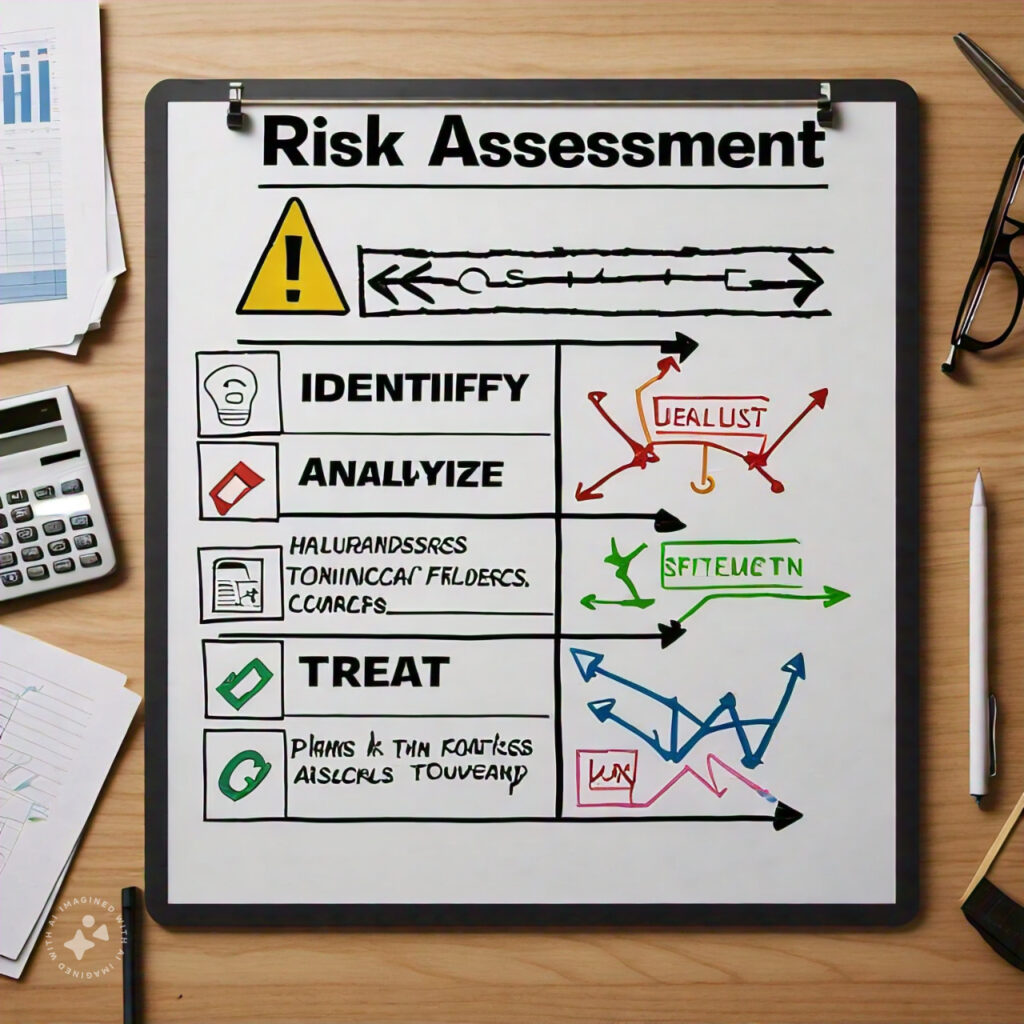
The financial landscape is undergoing a significant transformation, driven by the emergence of Decentralized Finance (DeFi). DeFi’s decentralized, open, and transparent nature is challenging traditional banking models, offering innovative solutions for lending, payments, asset management, and more. As a financial professional or fintech innovator, understanding DeFi’s impact is crucial for staying competitive and capitalizing on new opportunities.
With the global DeFi market projected to reach $1.4 trillion by 2025, it’s essential to grasp the underlying technologies, trends, and innovations driving this disruption. This article will delve into the world of DeFi, exploring its core principles, technologies, and applications. We’ll examine the opportunities and challenges DeFi presents for traditional banking, and discuss the implications for financial professionals and fintech innovators.
Key Takeaways:
- Understand DeFi’s core principles and technologies
- Learn how DeFi is changing traditional banking models
- Discover opportunities for growth and innovation in DeFi
- Gain insights into the challenges and risks associated with DeFi
Understanding DeFi’s Impact on Traditional Banking
DeFi’s decentralized architecture and blockchain technology enable peer-to-peer transactions without intermediaries, reducing costs and increasing efficiency. This section will explore DeFi’s core principles, technologies, and applications, highlighting their impact on traditional banking.
Core Principles:
- Decentralization: DeFi operates on blockchain networks, ensuring that no single entity controls the flow of funds.
- Open-source: DeFi protocols are transparent, allowing developers to review and contribute to the code.
- Permissionless: Anyone can access DeFi platforms, regardless of location or financial status.
Technologies:
- Smart Contracts: Self-executing contracts with the terms of the agreement written directly into code.
- Decentralized Applications (dApps): Applications built on blockchain networks, enabling peer-to-peer interactions.
- Stablecoins: Cryptocurrencies pegged to the value of a fiat currency, reducing volatility.
Applications:
- Lending: DeFi platforms like Compound and Aave enable decentralized lending, offering higher returns and lower borrowing costs.
- Payments: DeFi-based payment systems, such as PayPal’s cryptocurrency checkout, facilitate fast and low-cost transactions.
- Asset Management: DeFi platforms like Yearn.finance and Uniswap enable decentralized asset management, providing diversified investment opportunities.
Real-Life Examples:
- JPMorgan’s JPM Coin: A stablecoin used for cross-border payments, reducing transaction times and costs.
- Goldman Sachs’ DeFi Investment: A $15 million investment in DeFi platform, Circle, demonstrating traditional banking’s growing interest in DeFi.
Staying Updated with Industry Trends and Developments
The DeFi landscape is rapidly evolving, with new technologies, innovations, and players emerging continuously. This section will highlight current trends, statistics, and developments in DeFi, ensuring financial professionals and fintech innovators stay informed.
Current Trends:
- Layer 2 Scaling Solutions: Technologies like Optimism and Polygon enable faster and cheaper transactions, addressing Ethereum’s scalability issues.
- Decentralized Identity: Solutions like Self-Sovereign Identity (ERC-725) and Decentralized Identifiers (DIDs) enhance user privacy and security.
- Regulatory Clarity: Governments and institutions are establishing guidelines and frameworks for DeFi, ensuring compliance and legitimacy.
Statistics:
- DeFi Market Size: The global DeFi market reached $200 billion in 2022, growing 10x in 12 months.
- User Adoption: Over 3 million users interact with DeFi protocols monthly, with a 20% monthly growth rate.
- Traction: DeFi protocols have attracted $20 billion in total value locked (TVL), with a 50% quarterly growth rate.
Developments:
- Institutional Investment: Traditional financial institutions, like BlackRock and Goldman Sachs, are investing in DeFi platforms and infrastructure.
- DeFi-Traditional Banking Collaborations: Partnerships between DeFi platforms and traditional banks, like JPMorgan and Compound, are increasing.
- Regulatory Sandboxes: Governments are establishing regulatory sandboxes to facilitate DeFi innovation and testing.
Real-Life Examples:
- Visa’s DeFi Partnership: A partnership with DeFi platform, Anchorage, to enable institutional investment in DeFi.
- Goldman Sachs’ DeFi Report: A research report highlighting DeFi’s potential for disrupting traditional banking.
Risk Assessment and Regulatory Insights

While DeFi offers numerous opportunities, it also poses significant risks and regulatory challenges. This section will delve into the potential risks and regulatory considerations associated with DeFi, ensuring financial professionals and fintech innovators are aware of the landscape.
Potential Risks:
- Security Risks: Smart contract vulnerabilities, hacking, and exploits can result in significant losses.
- Market Risks: Volatility, liquidity, and market manipulation can impact DeFi investments.
- Operational Risks: Poor governance, management, and compliance can lead to reputational damage.
- Regulatory Risks: Unclear or changing regulations can impact DeFi’s legitimacy and adoption.
Regulatory Considerations:
- Anti-Money Laundering (AML) and Know-Your-Customer (KYC): DeFi platforms must comply with AML and KYC regulations.
- Securities and Exchange Commission (SEC) Guidelines: DeFi platforms must navigate SEC guidelines on securities and investment products.
- Commodity Futures Trading Commission (CFTC) Oversight: DeFi platforms must comply with CFTC regulations on derivatives and commodities.
- Global Regulatory Cooperation: DeFi platforms must navigate diverse regulatory environments and cooperate with global authorities.
Mitigating Risks:
- Conduct thorough risk assessments and due diligence
- Implement robust security measures and smart contract audits
- Develop clear governance and compliance frameworks
- Engage with regulatory bodies and industry associations
Real-Life Examples:
- SEC’s DeFi Warning: A warning to DeFi platforms to comply with securities regulations.
- CFTC’s DeFi Guidance: Guidance on DeFi’s application to commodities and derivatives regulations.
Opportunity Identification and Investment Considerations
DeFi presents numerous opportunities for growth, innovation, and investment. This section will explore potential opportunities, investment considerations, and real-life examples, enabling financial professionals and fintech innovators to capitalize on DeFi’s potential.
Opportunities:
- Lending and Borrowing: DeFi platforms offer innovative lending and borrowing solutions, such as flash loans and peer-to-peer lending.
- Decentralized Exchanges (DEXs): DEXs enable secure, transparent, and efficient trading of cryptocurrencies and assets.
- Stablecoins and Asset Management: DeFi platforms offer stablecoin-based asset management solutions, reducing volatility and increasing returns.
- Gaming and NFTs: DeFi-based gaming and NFT platforms enable new revenue streams and ownership models.
Investment Considerations:
- Risk-Return Analysis: Evaluate DeFi investment opportunities based on risk-return profiles.
- Market Research: Conduct thorough market research and analysis to identify emerging trends and opportunities.
- Regulatory Compliance: Ensure DeFi investments comply with regulatory requirements and guidelines.
- Diversification: Diversify DeFi investments to minimize risk and maximize returns.
Real-Life Examples:
- Compound’s DeFi Lending: A DeFi lending platform with over $1 billion in assets under management.
- Uniswap’s DEX: A leading DEX with over $1 billion in trading volume.
- Yearn.finance’s Asset Management: A DeFi asset management platform with over $1 billion in assets under management.
Competitor Analysis and Market Gap Identification
Understanding the competitive landscape and identifying market gaps are crucial for success in DeFi. This section will analyze DeFi competitors, identify market gaps, and provide real-life examples, enabling financial professionals and fintech innovators to develop effective strategies.
Competitor Analysis:
- DeFi Lending Platforms: Compound, Aave, and dYdX compete in the DeFi lending space.
- DEXs: Uniswap, SushiSwap, and Curve Finance compete in the DEX space.
- Stablecoin Platforms: USDT, USDC, and DAI compete in the stablecoin space.
Market Gap Identification:
- Scalability Solutions: DeFi platforms need scalable solutions to accommodate growing demand.
- Regulatory Compliance: DeFi platforms need to navigate complex regulatory environments.
- User Experience: DeFi platforms need to improve user experience to attract mainstream adoption.
- Asset Management: DeFi platforms need to offer innovative asset management solutions.
Real-Life Examples:
- Aave’s Scalability Solution: Aave’s Layer 2 scaling solution enables faster and cheaper transactions.
- Compound’s Regulatory Compliance: Compound’s compliance with SEC regulations ensures legitimacy.
- Uniswap’s User Experience: Uniswap’s user-friendly interface attracts mainstream users.
- Yearn.finance’s Asset Management: Yearn.finance’s innovative asset management solutions attract investors.
Partnership Opportunities and Competitive Advantage

DeFi’s growth is fueled by partnerships and collaborations. This section will explore partnership opportunities, competitive advantage strategies, and real-life examples, enabling financial professionals and fintech innovators to develop effective partnership strategies.
Partnership Opportunities:
- Traditional Financial Institutions: Partner with banks, asset managers, and insurers to expand DeFi’s reach.
- Tech Companies: Collaborate with tech giants, startups, and software developers to enhance DeFi’s technology.
- DeFi Platforms: Partner with other DeFi platforms to expand offerings, improve liquidity, and reduce costs.
Competitive Advantage Strategies:
- Unique Value Propositions: Develop unique value propositions to differentiate DeFi offerings.
- Innovative Solutions: Develop innovative solutions to address DeFi’s scalability, security, and usability challenges.
- Strategic Acquisitions: Acquire complementary businesses to expand DeFi offerings and improve competitiveness.
Real-Life Examples:
- JPMorgan’s DeFi Partnership: JPMorgan’s partnership with DeFi platform, Compound, to offer DeFi-based lending solutions.
- Visa’s DeFi Collaboration: Visa’s collaboration with DeFi platform, Anchorage, to enable DeFi-based payments.
- Aave’s Acquisition: Aave’s acquisition of decentralized lending platform, Lens Protocol, to expand its DeFi offerings.
Please review this section before I proceed to the next one. Let me know if you need any changes or if you’re ready for me to continue.
DeFi’s Advantages and Challenges
Advantages:
- Increased Accessibility: Global, inclusive financial services
- Improved Security: Decentralized, immutable, and transparent transactions
- Enhanced Efficiency: Peer-to-peer, automated, and streamlined processes
- Increased Transparency: Open-source, auditable, and community-driven
- Innovation: Rapid development, experimentation, and innovation
Challenges:
- Regulatory Uncertainty: Lack of clear regulations and guidelines
- Scalability Issues: Limited scalability, high fees, and congestion
- User Adoption: Complexity, user experience, and education barriers
- Security Risks: Smart contract vulnerabilities, hacks, and exploits
- Interoperability: Integration challenges between DeFi platforms and traditional finance
Addressing Challenges:
- Regulatory Clarity: Collaborative efforts between regulators, industry leaders, and DeFi platforms
- Scalability Solutions: Layer 2 scaling solutions, sharding, and off-chain transactions
- User-Centric Design: Intuitive interfaces, education, and community support
- Security Best Practices: Audits, testing, and secure development practices
- Interoperability Standards: Open standards, APIs, and collaboration
By understanding DeFi’s advantages and challenges, we can work towards creating a more robust, user-friendly, and regulatory-compliant DeFi ecosystem.
Conclusion
The decentralized finance (DeFi) ecosystem has experienced rapid growth and innovation, but it also faces significant challenges and risks. By understanding the key strategies and techniques outlined in this article, financial professionals and fintech innovators can develop effective solutions to drive DeFi’s continued growth and success.
Key Takeaways:
- Scalability and Interoperability: Develop scalable solutions and interoperable protocols to increase efficiency and adoption.
- Security and Risk Management: Implement robust security measures and risk management techniques to protect against vulnerabilities and potential losses.
- Regulatory Compliance: Ensure compliance with evolving regulatory frameworks to maintain trust and stability.
- Talent Acquisition and Development: Attract and develop top talent to drive innovation and growth.
- Community Building and Engagement: Foster strong communities and engage with users to build trust and loyalty.
- Partnerships and Collaborations: Establish strategic partnerships and collaborations to expand reach and capabilities.
- Decentralized Governance and Decision-Making: Develop decentralized governance models and decision-making mechanisms to ensure community involvement and transparency.
By embracing these key takeaways, DeFi can continue to innovate and grow, providing new opportunities for financial inclusion, efficiency, and innovation.






